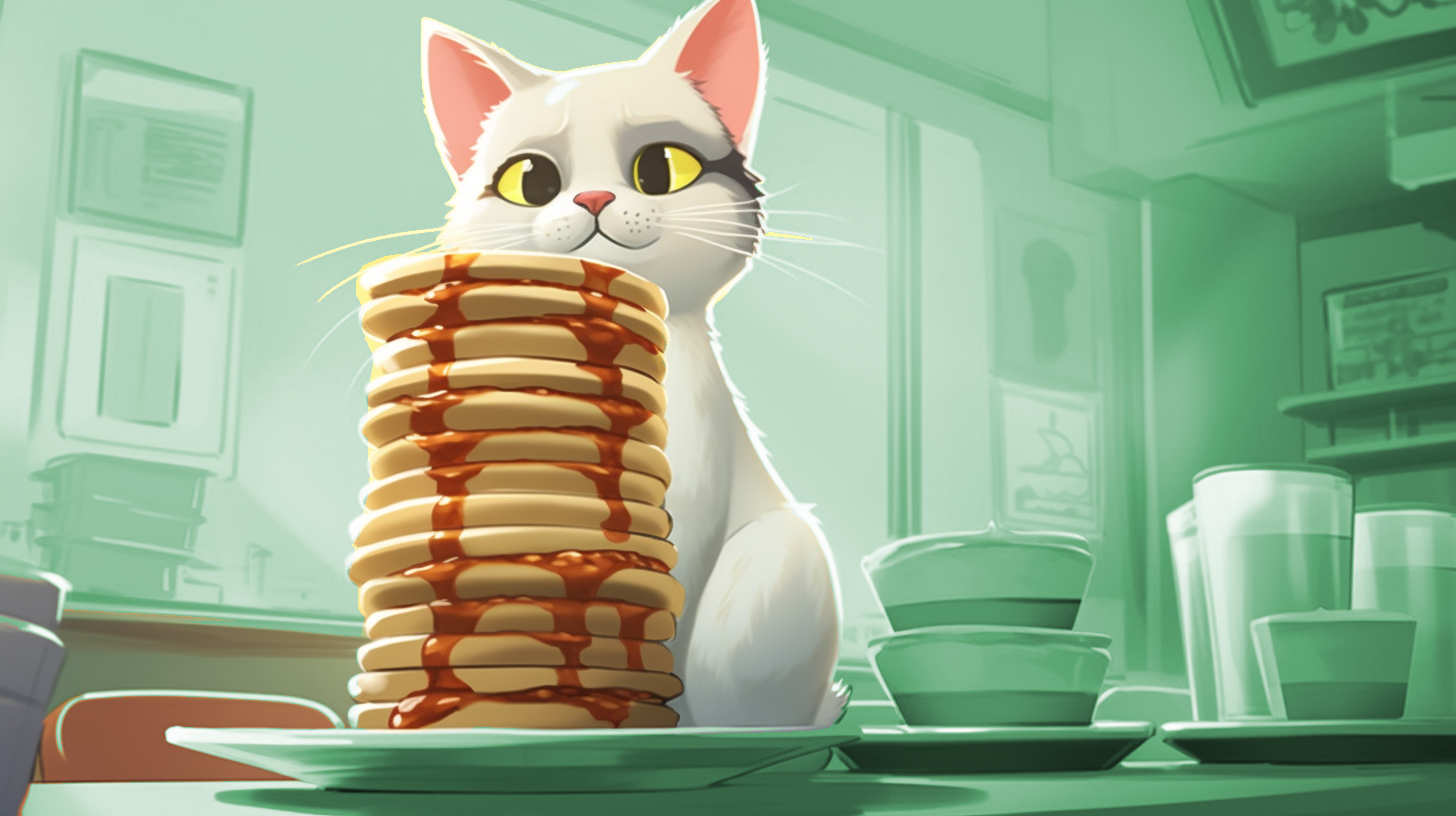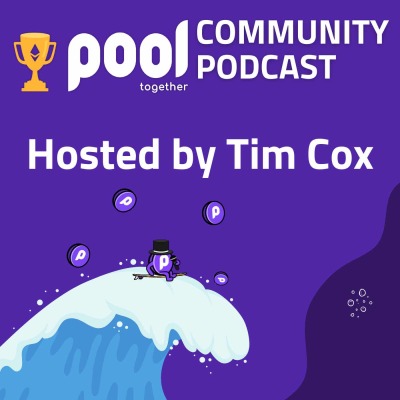
Thumbs' Update: Stacked
Seeing red. And blue. And purple.

Become the official sponsor of this issue by minting a 1/1 NFT on Base. More info.
Hey friends 👋
I don't know about you but I'm having a hard time believing it's September already. It feels like just yesterday it was onchain summer. Now it's time for the seasons change to usher in something new. Will it be Farcaster Fall? I think it just might.
In case you missed it, Farcaster is a "sufficiently decentralized protocol" on which users can build platform agnostic, data portable social graphs. It's another one of these DeSo (decentralized social) networks you've heard me talk about before in the newsletter, alongside Lens and Bluesky.
But why do we even need protocol-based social media?
We take for granted that we live in a world where a lot of things seem to just work. We boot up our computer and log into our favourite apps and we never really think about the amount of power tech companies are lording over us. They may not exercise the power often, but if they choose to, they can cut off our access to the world in an instant. And in most cases, we'll have no recourse, not to mention, no platform to protest.
All it took was a megalomaniac man-child taking over the would-be town square and booting off every journalist who disagreed with him and every comedian who exercised their first amendment right to parody, and suddenly people understood. And if that wasn't enough, cutting off api access and turning the app into a hellscape of bots and phishing scams (masquerading as ads, masquerading as posts) reminds us that centralized social networking strips us our digital freedom to exit without going into exile.
DeSo protects us from being deplatformed, and it gives those who would be shadowbanned (often marginalized groups, sex workers, activists and dissidents) the ability to take their audience with them from app to app, algorithm to algorithm. Take for example, Lens Protocol.
In a short time, this protocol has inspired a whole variety of different apps that users can choose from. Orb, Lenster, Buttrfly, Phaver, Yup, and Lenspeer offer twitter-like experiences. Lenstube provides a YouTubesque featureset, while Riff is more Soundcloud. There's even an app called Dumpling, which I... don't understand... but all of these connect to the same account which is owned by the user, stored as an immutable NFT in their wallet.
Despite Lens' impressive community of builders, I've still found myself spending more time on Farcaster. Like Lens there are several front ends available for the protocol, including Warpcaster, the aforementioned Yup, Opencast, and Discove for twitter-like feeds. Kiwi News uses the protocol to rethink Hacker News, while Launchcaster is more ProductHunt. And then there's Paragraph (the platform you may very well be reading this newsletter on) which allows for commenting on publications via the Farcaster protocol.
Hopefully you can see the reason I and many others are so excited about this new paradigm for social networking, even if its early days. And as early as it is, we've just hit a rather big milestone...
An Optimistic Future for Farcaster
Some of you may have noticed that I sent you an invitation last week to create a Farcaster account. I had planned to offer these invitations in this issue of the newsletter. However, unexpectedly, Dan Romero, the co-creator of the Farcaster protocol, announced last week that the protocol would be transitioning from a testnet to Optimism mainnet on August 29th. As a result, the invites would need to be used up in the days leading up to the transition.
So I shared a tweet ⬇️
Quite a few of you signed up, while some missed the boat. Don't stress too much though. Permissionless signups will begin soon, with an annual fee of $5 paid in ETH. The only real difference is that those who signed up via an invite will receive the first year for free.
"But wait," you might be thinking, "what am I paying for?" The answer, according to Dan Romero, is storage. You see, Farcaster's design makes use of blockchain to issue user IDs and store social graphs, but basically everything else happens offchain to limit unnecessary tradeoffs around cost and scalability. Here's a chart showing the design of Farcaster v3, the version that just launched on Optimism.

Now whether the answer had been storage, or paying developers, or preventing spam, I wouldn't have cared because $5 a year isn't much. I'm currently paying $15 every month for twitter Blue (I'm not gonna call it X Premium, sorry Elon) just to keep my account from being shadowbanned.
I'm personally really excited by what the developer community is building with Farcaster, and I want to see what's next. Afterall we're technically still in beta.
Speaking of which...
PoolTogether v5 is Live (in Beta)
August was a tough month for me and the rest of the PoolTogether Growth Team, because as much as we wanted to hype up the forthcoming version of everyone's favourite prize-savings protocol, we had to sit back and wait for the formal audit process to complete.
Why are audits so important?
I'm glad you asked! You see, something a lot of people struggle to grasp about smart contracts is that once deployed, they typically can not be upgraded. This is what's meant by immutable. While there are smart contracts out there with permissioned access, often to a multisignature wallet held by the core devs, this is not considered truly decentralized, and therefore the goal for most is to release smart contracts which can not be upgraded. This, as you can imagine, comes with some tradeoffs.
If no one can upgrade the contracts, then bugs become more of a risk. We've seen how this can play out in the past and so any protocol worth their salt invests the time and money in a secure, third party auditing process.
The developers at PoolTogether have always taken security seriously and submitted the code for multiple audits and as a result it has remained one of the safest places to save money on the blockchain.
PoolTogether v5 is a big upgrade though. As I laid out in my post Hyped for the Hyperstructure, this new iteration opens up prize-savings to everyone by making vault creation truly permissionless. But creating an immutable onchain protocol means needing to be certain that the version that's released is the forever version. So this time around, they've gone the extra mile with multiple audits, including bug bounty contests, and now its time for beta testing.
As explained in this governance post, PoolTogether v5 will begin life as a private beta. This way a small selection of experienced users can provide feedback about the nuances of the protocol UX. During this time the vaults will include some boosted deposits to help increase the yields and offer better prizes. Those who signed up early for the beta will also be eligible to win a deposit delegation during the beta period.
One thing the developers, Generations Software, wanted to make clear about this initiative:
This beta is not intended as a test of the security of the protocol. That testing will have been completed when the beta begins. We’ve invested $250k in audits from two different firms and feel confident in their work and the safety of the system.
With that out of the way, let's move on to the question I’m sure you’re all wondering.
How Can You Access the Beta?
According to the the official beta launch Mirror post,
You are invited to try the all-new PoolTogether before the public if you hold any of these assets:
1000+ POOL
1000+ PTaUSDC
A Pooly or Pfer NFT
A PoolTogether GitPOAP or PoolyCon POAP
If you meet any of these criteria, you probably have a notification in your Zerion or Taho wallet, or on Daylight, informing you of your eligibility. Here's what that looked like for me since I hold a Pooly NFT ⬇️
If you do see that notification, you can click it. Otherwise, follow the steps in this article to access the beta on Optimism ⬇️
Speaking of Optimism
In the last issue of the newsletter, I talked about the Bedrock upgrade and how it would mean big things for Optimism's open-source codebase, aka the OP Stack. I mentioned that it had already paved the way for a number of forks and variants and an entire thesis for scaling Ethereum known as the Superchain.
I also alluded to the fact that I was planning to write a big explainer post all about this upgrade. When I started digging into the subject, it turned out to be a lot bigger than I realized. I spent a whole month listening to podcasts, watching developer conferences, reading documentation and blog posts and tweets; all trying to formulate the best possible explainer.
And I think all that work was worth it. After releasing the post, it quickly became my most collected post of all time on mirror, with 10 paid mints at the time of writing. The tweet announcing it was similarly popular, as was my announcement on Farcaster and Lens.
I'm incredibly proud of that post, the work I put into it, and the reception it's had so far. If you haven't checked it out yet, please do. And if you like what you read, consider collecting it as an NFT on Mirror. You'll be one of only 420 possible collectors.
Collecting content and supporting creators onchain; you know what that is?
Based
At the top of the post I mentioned onchain summer, a nod to Coinbase's massive month-long launch event for their new Ethereum L2, Base. Partnering with a wide array of talented artists and innovative protocols, Base immediately captured the attention of the crypto curious, and successfully drove the majority of network traffic off the Ethereum layer 1, up to the more affordable L2s.
During their daily events, I was able to collect a lot of amazing NFTs, including some from artists I'd wanted to add to my collection for a while like Deekay Motion, Pablo Stanley, and Amber Vittoria.
And there’s one other NFT of note that just launched on Base:
Hey Friends!
I've gained a lot of new subscribers this month, so it's very possible that there are many of you reading this who are unfamiliar with my take on the web3 creator economy. I laid out the long-form argument in this article, but the tl;dr is that I believe NFTs unlock a lot of potential for creator patronage, which is why I made one. It's available on Ethereum, Optimism, ZORA NETWORK, and now: Base
I recently rewrote the caption to better explain to those who stumbled upon this collectible exactly what they were looking at. Here's an excerpt:
The creator economy is broken. Most patronage platforms are walled gardens connected to legacy financial services. This system is extractive and often quite slow to pay creators. Furthermore, both the creators and the patron are easily censorable.
If you’ve read much of my writing, you've probably heard me say that "NFTs are proof-of-patronage." This little token is only minted into existence once someone pays a fee and it is entirely unique. After all, that’s what non-fungible means.
So I thought to myself, why not explore this concept further and create my own non-fungible patronage token? That’s how Hey Friends! was born.
I paid a real stop motion animator named Joshua Franco (who worked on Robot Chicken among other projects) real money, upfront to create a real, physical clay stop animation. I did this because I wanted to do something different, something special, something that says, "I appreciate your support."
Over time, I hope to use this NFT as a set of keys to unlock unique token-gated content and experiences. For now, I've started with simple perks, the most prominent of which is...
Q & A
The first person to mint Hey Friends! on Base was someone I have great respect for. Kames Geraghty of District Labs asks three questions so good that I've decided to answer all of them:
What excites you the most about Web3?
I've only just begun to scratch the surface of this subject, but I think you can pick out from my writing that open-source is something I believe a lot in. I think web3 and crypto have done more to align financial value with the public good that is libre code than web2 ever could. And if we get it right, it will do a lot for the democratization of access to all manners of digital life.
Where are the major milestones you think we'll reach in the next 1, 5 and 10 years?
A major milestone that may be within the next year and which, itself, will set forth a Cambrian explosion of new possibilities, is going to be zero knowledge proofs being added to the base layer of Ethereum to solve the issue of state storage. This will pave the way for full-nodes to be run on everyday hardware, creating a far more robust and decentralized network.
In 5 years, I expect AI to be thoroughly integrated into all the software we (and our adversaries) use. A major milestone that will need to be accomplished before then is fully private-by-default transactions on Ethereum. I've written before about why I believe it is crucial to freedom, democracy, and human rights that people be able to transact privately, but AI technology will only exacerbate the risks posed by public ledgers.
In 10 years, we may finally see the end of dictatorships. I know it's optimistic, and certainly not in line with the rise in fascism we've seen around the world, but I truly believe technologies like borderless, private transactions, uncensorable journalism, and decentralized science will help foster coordination among people collectively against centralized authority, especially in those places where it attempts to assert authoritarian and coercive control.
What's a unique insight you have about Web3? Something that no on else, or very few people, have yet to realize?
It's just the internet, friends. New technologies, same great taste. This is the natural evolution of the thing Tim Berners-Lee helped build and one day we'll look back and laugh that anyone ever called it web3, because it was always just web.
Alright, it's just about time to wrap this thing up. If anyone stuck around this long, they deserve a medal, or at least some...
Goodies
As promised on twitter, I've got some invites to give away:
5 invites for Bluesky
2 invites for Lens Protocol
To be eligible to win, share this newsletter on twitter or Farcaster, tag me (@thumbsupfinance on twitter, @thumbsup.eth on FC), and share one thing you found interesting in the newsletter. It could be a section of quoted text, or a just word or two of your own.
I'll choose the best ones and over the course of the next one to two weeks, I'll offer them either a Bluesky or Lens invite. They can choose, but it will be first come, first served.
Ok, now, let's finish with my favourite part…
Recommendations
Every month I share with you some of my favourite content I've been consuming and creating. This month I've got something for everyone!
For those who are interested in community-owned, open-source public goods, there's an interview from the PoolTogether Community Podcast with the founder of Taho, a Zerion that does things differently ⬇️
On the subject of the OP Stack, here's an excellent interview from Bankless with Optimism Co-Founder Ben Jones and the person behind Base, Jesse Pollock, all about the Superchain thesis. In it, Ben makes the point that once a permissionless prover is released for Optimism, there will be no guardrails. This reminded me a lot of the discussion around PoolTogether taking its time to ensure the code is safe and the UX is flawless.
Definitely worth the watch ⬇️
Lastly, I continue to push the boundaries of my creativity and my weirdness with onchain experiments of all sorts. Firstly, from my side project Retrofuturist, a combination of protopian sci-fi writing and AI artwork generation and curation, comes the third edition of my collection, Retrofutures. A free mint on ZORA NETWORK, you can collect it below ⬇️
Finally I've got something even more experimental. I've been trying to find my ideal writing software for some time, and I've experimented with a lot of different options, but the problem is two fold. I'm very particular and I don't own my own macbook; the latter is a problem as most of my favourite solutions are either mac-only or mac-is-preferable.
So I did a little stream-of-consciousness writing about this and I decided to take advantage of Zora's option to mint documents, and I created... a 1/1 PDF. It's a longshot, but I priced the PDF at the value of a Macbook Air and if by some stretch it sells, I'll aquire a computer of my own and stop using my 6 year old, property of my work, laptop to run my creative work.
How’s that for optimism?
Until next time,
Thumbs Up
If you enjoyed this newsletter, consider collecting a copy. It's like tipping and receiving a unique digital collectible as a receipt.
If you want to become monthly supporting patron and unlock special perks, check out my Hypersub
And for the cypherpunks, I accept anonymous tips with Zcash to my shielded address:And for the cypherpunks, I accept anonymous tips with Zcash to my shielded address:





 2
2



 $OP
$OP





